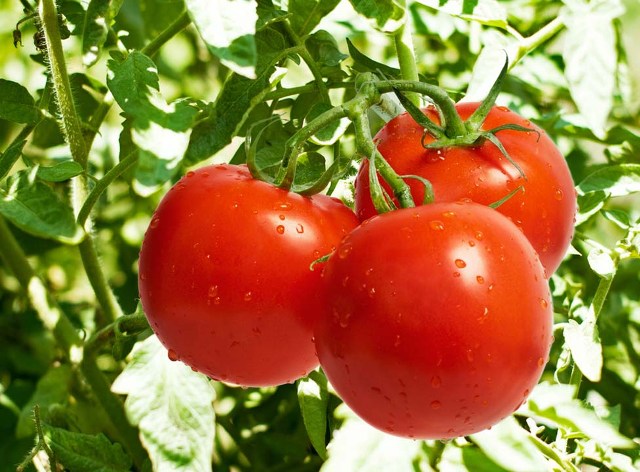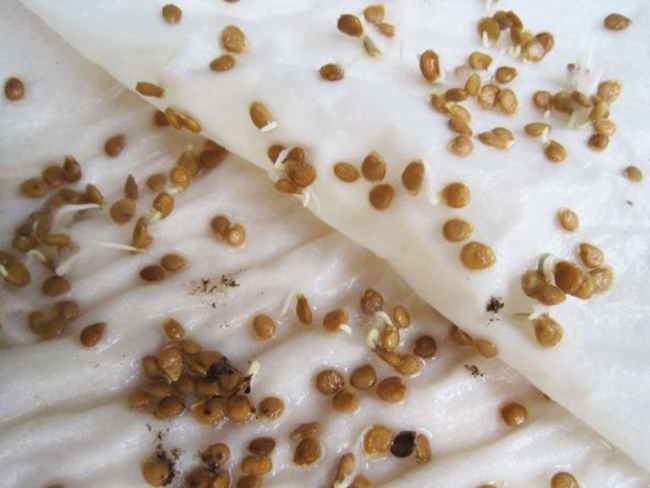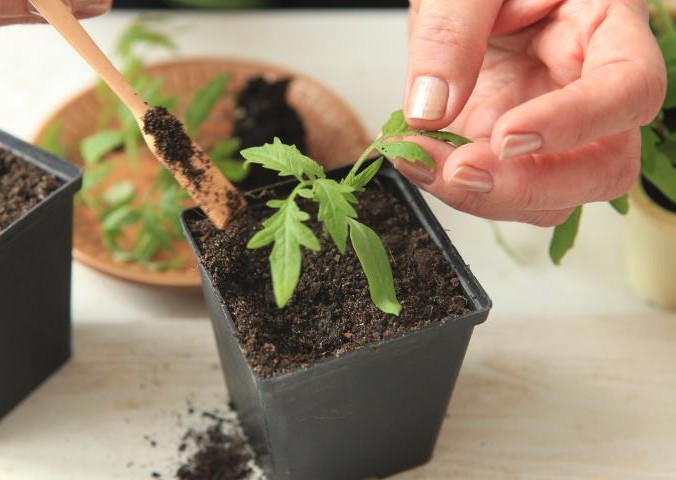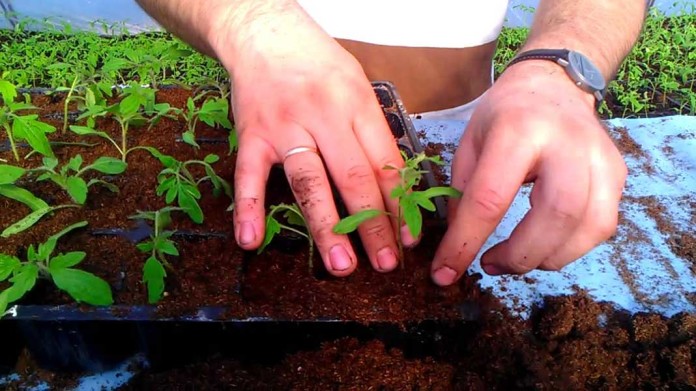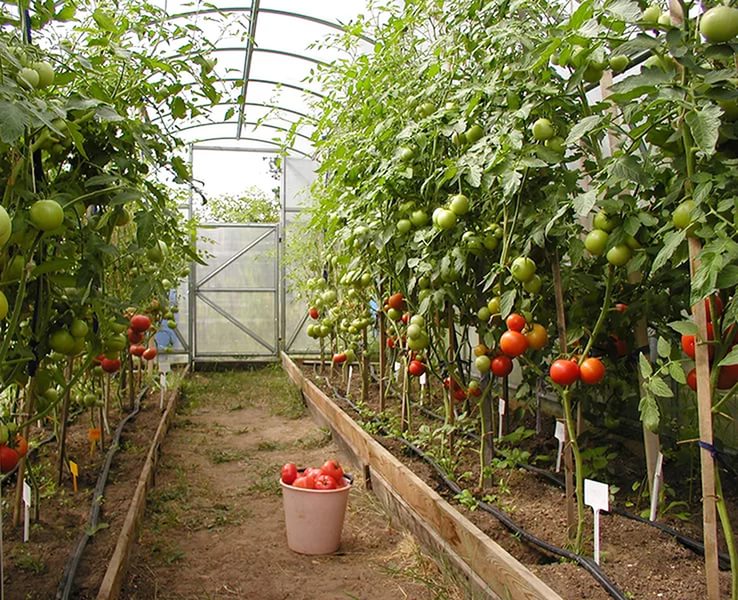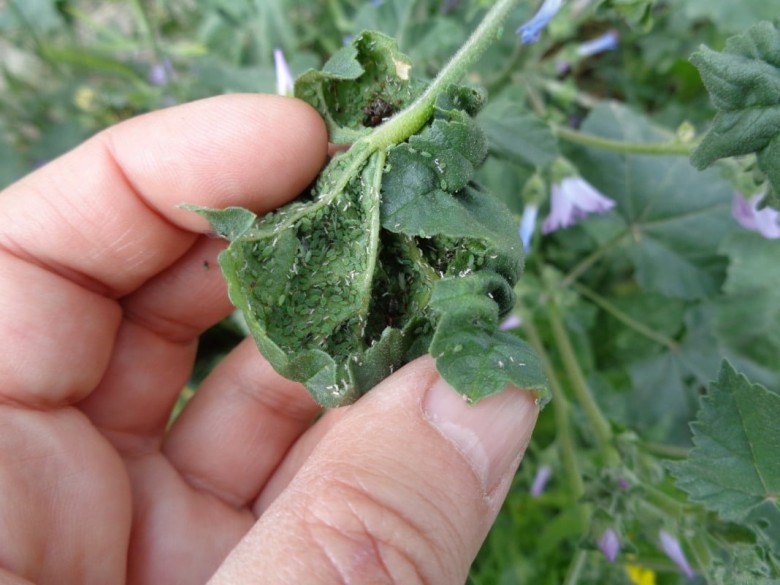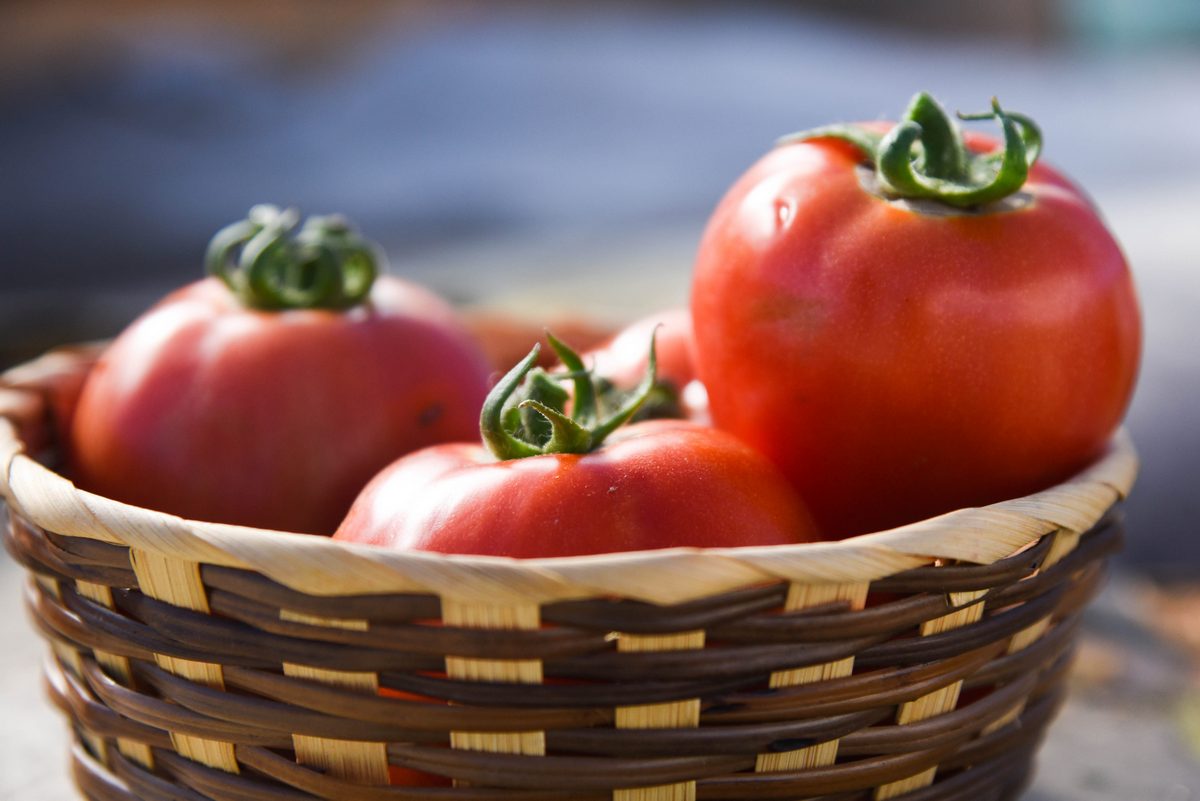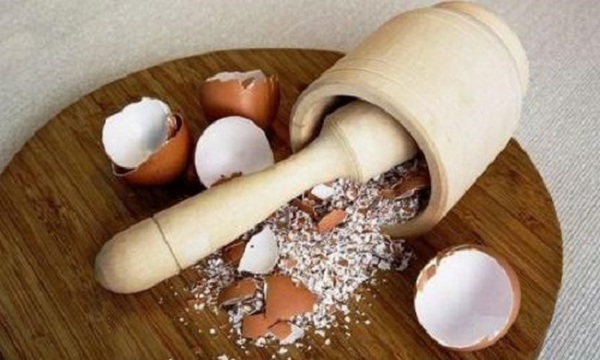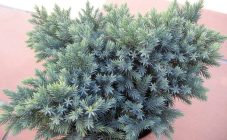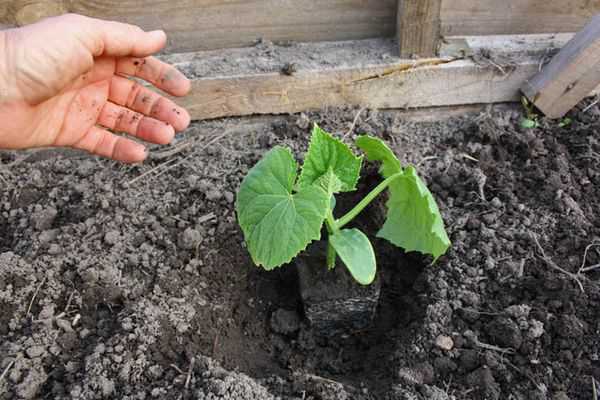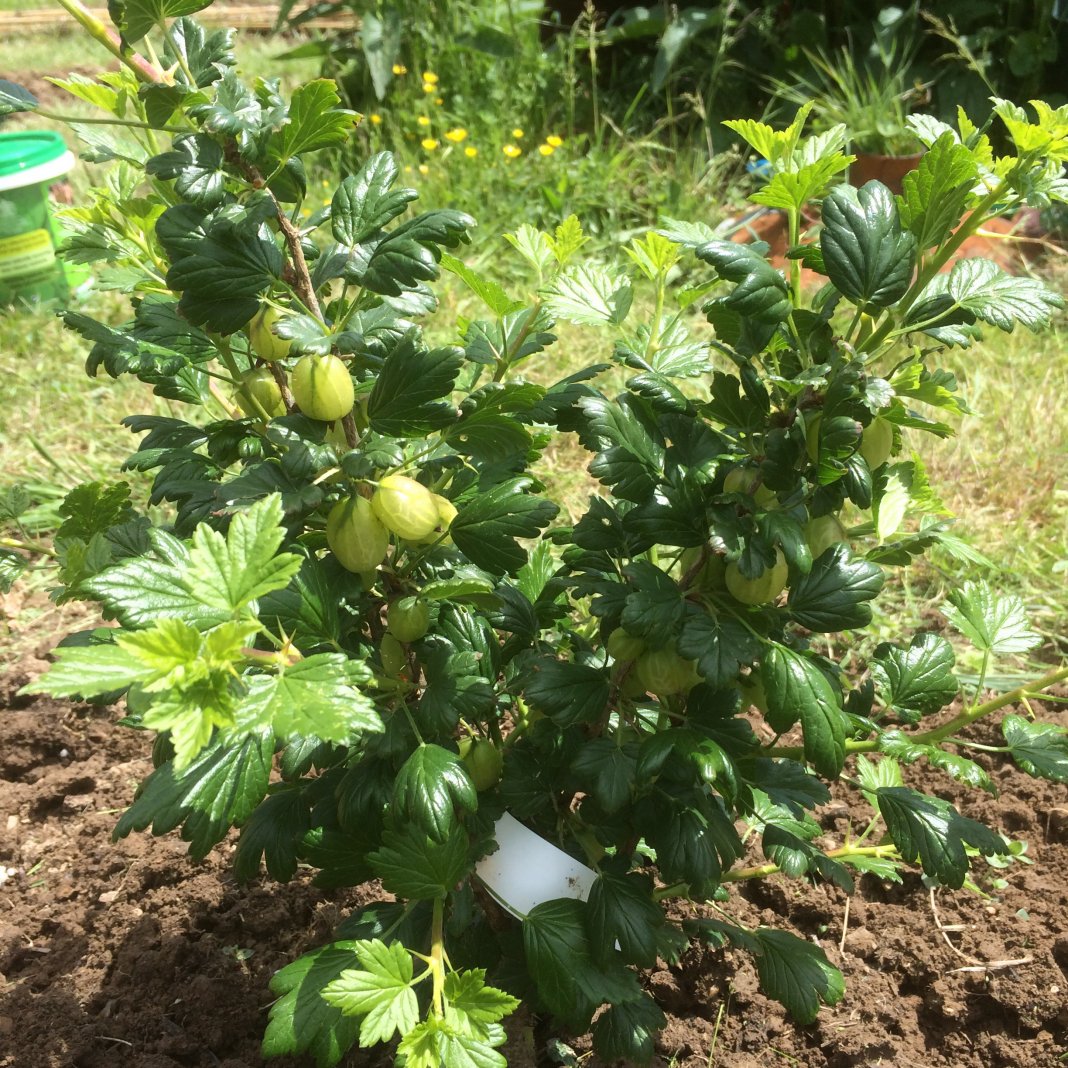Content:
To please yourself with an early harvest of tomatoes, you need to take a responsible approach to growing seedlings. Summer residents are preparing for the season long before it starts: they process and soak seed material, buy soil and fertilizers. Gardeners are also interested in how and when to transplant tomatoes into a pot correctly.
Description
Tomatoes are an annual of the Solanaceae family, which are native to South America and occupy a leading position in the vegetable world.
Tomatoes are a popular plant today because of their unique beneficial and dietary properties. They are grown in open and sheltered beds, greenhouses, loggias and at home on the window.
The heat-loving plant grows and develops optimally at + 22 ... 25 ° C.
The pollen does not ripen, and the ovary crumbles if the temperature is less than +10 ° C. Tomato plantations do not tolerate excess air humidity, but they need a lot of water for the development of fruits.
The lack of lighting affects the plant negatively:
- pallor of foliage;
- falling buds;
- pulling out branches.
Supplementary lighting improves the quality of seedlings and increases the productivity of crops.
Tomato grows on any type of soil, in addition to acidic, when organic matter and mineral fertilizing are introduced and the soil is kept loose. The main components of mineral fertilizer for seedlings:
- nitrogen;
- potassium;
- phosphorus.
Tomato seeds ripen physiologically in green, formed berries, do not lose their germination for at least 6 years.
Germination of seed material occurs with favorable factors and humidity after 3-4 days. The first true leaf is formed in a week, the next 3-4 leaves appear in 5-6 days, then the formation of each new leaf - after 3-5 days.
The time interval from shoots to flowering of the bush takes 50-70 days, from flowering to harvesting 45-60 days pass.
Tomatoes are widely used in cooking, fresh and fried, boiled and canned. They are prepared from:
- sauces and pastes;
- juices and tomato puree;
- lecho and ketchups;
- soups and canned food.
There is no cholesterol in tomatoes. The chemical composition of tomatoes includes:
- fiber;
- ascorbic acid;
- retinol.
Vitamin C is concentrated mainly around seeds. The pigment lycopene is found in tomatoes, which is not produced by the human body. Phytonutrient is a powerful antioxidant that protects against the development of neoplasms and pathologies of the heart and blood vessels.
Agrotechnics of tomato transplant
Seed selection
An important stage in the development of the plant is the transplanting of tomato seedlings. However, growing tomatoes requires the selection of suitable seeds. In order for the planting material to please with germination, and the seedlings with strength and health, pay attention to:
- purchase of tomato varieties from various manufacturers;
- germination of seeds at the same time - saving time with rare seedlings;
- purchase of seeds from experienced vegetable growers.
The latter method is effective and guarantees the germination of the seed.
Presowing preparation
Before planting, the seeds are disinfected. There are various methods in the arsenal of summer residents:
- Potassium permanganate. 1 gthe drug is dissolved in a liter jar of water and the planting material is kept for 15 minutes.
- Use of drugs Immunocytofit and Novosil, Mikrassa and Zircon. Some vegetable growers are advised to soak the seeds alternately in the growth stimulator Epine and potassium permanganate.
After disinfection, germination of seeds is recommended. Take a diaper soaked in water, where the seeds are placed.
Picking
Sowing material, as a rule, is planted in the second or third decade of February in trays and boxes with a nutrient substrate. Seeds tested in advance for germination germinate together and begin to inhibit the development of each other. The sprouts that grow densely take energy to stretch upward, rather than form flower buds and bear fruit.
Therefore, in March, a pick is carried out and powerful seedlings are planted in individual glasses to obtain the necessary nutrients for tomatoes.
Distinctive features of transplanting tomatoes:
- plants like the procedure;
- transplantation of weak roots;
- better growth and development of a dive seedling.
When you plant tomatoes after germination, it promotes intensive vegetation and active flowering of the plantings. The damaged roots are restored very quickly. The number of picks affects the development and power of the roots.
It does not apply to the mandatory procedures for transplanting tomato seedlings into separate pots. However, the operation has its advantages:
- stimulates the formation of additional lateral branches, which form a strong root system of the tomato;
- sick and weakened seedlings are discarded;
- costs of growing seedlings are reduced;
- the soil and the area are used productively.
Among the minuses, a slowdown in development and later fruiting are noted, when tomato seedlings have to be transplanted.
When and how seedlings dive for the first time
Tomatoes are transplanted for the first time into separate containers, 8 cm high, this falls on the formation of real two leaves in seedlings. Plants are grown in a small container for 3 weeks.
Tomato seedlings are planted in a special substrate. It contains components that are taken in equal proportions:
- sand;
- peat;
- rotted compost.
Before planting the plants, the soil is disinfected in the oven.
Transplant technology
Correct tomato transplant requires compliance with certain rules:
- Selection of only healthy and powerful shoots.
- Filling the pots with a special soil mixture and spilling potassium permanganate solution.
- It is better not to allow tomato seedlings to go deeply into the soil.
- There is no consensus among gardeners about removing the central root from tomatoes. Some believe that manipulation strengthens and expands the root system. Opponents argue that picking is an injury for a plant that does not need additional stimulation.
- It is not enough to plant tomato seedlings in a comfortable environment. The main thing is to provide proper care. Illumination promotes the formation of flower brushes. It is appropriate to periodically turn the dishes in different directions to the sun so that the plantings do not stretch in one direction.
- When seedlings appear, they maintain the temperature regime in the house: +18 ° С - in the daytime and +15 ° С - at night.
Second pick tomato
21 days after the first transplant is the period when tomatoes can be transplanted again. The main task is to slow down the growth of tomatoes and improve the root system. In large cups, tomatoes have extra room to grow and harden. In addition, when plants are replanted again, they are freed from affected crops and healthy seedlings are protected - often pathogenic microorganisms are in the ground.
They act as follows:
- They pick up a pot, which is 2 times larger than the previous dimensions.
- In this case, the seedlings are dived by the transshipment method.For a day or two, how to transplant tomatoes, plants need abundant watering. The procedure will facilitate the extraction of the tomato bush. A third of the larger container is filled with soil. Then a seedling is placed with a lump of earth and the voids are covered with soil. Then the tomato bush is watered.
- It is advisable to place the plants immediately after transplanting in partial shade.
- 14 days after transplanting tomatoes in a large container, they are fed with fertilizer. Use 1 tbsp. l. superphosphate and 2 tbsp. l. ash that is dissolved in 10 liters of water. Enough 1 glass of liquid per container. After a week and a half, tomato seedlings are fed with a solution of nitrophoska and nitroammophoska. The feed is combined with irrigation to avoid root burns.
Transplanting tomatoes to open beds
Before planting in an unprotected area, you will need to harden the tomato seedlings. If it is at least + 12 ° C outside, the seedlings are put out into the yard. Ideal in the afternoon to protect tomatoes from sunburn. Strengthening tomato seedlings will allow the removal of seedlings, both in the morning and in the evening.
The care of recurrent frosts will tell you when to transplant tomatoes into the beds. The best predecessors for tomato plantings:
- cabbage and pumpkin;
- cucumbers and onions;
- zucchini.
Tomato bushes are not planted after eggplants, potatoes, and peppers.
Pre-prepare a site that is optimal for growing tomatoes.
Summer residents also carry out transplanting of seedlings into the greenhouse in April. To plant tomato bushes in a greenhouse, you will need insulation and protection from a sudden cold snap.
Crop parameters play a significant role when planting tomatoes in beds.
The process of planting tomatoes correctly on the beds includes:
- Cutting off 3 lower leaves from the shoot to ensure ventilation of plantings, protection against phyto-diseases, and strengthening of the fruit-bearing branch.
- The last time the seedlings are irrigated 3 days before planting. Even the lethargy and lifelessness of the plant is not a reason for watering before planting in the soil.
- To plant tomatoes on the site, dig holes that are deeper than the height of the second cassette.
- 1 tbsp is introduced into the pits. l. superphosphate and moisturize.
- The planted tomatoes are buried and hilled.
- The planted bushes are well watered.
- To protect tomatoes from strong ultraviolet rays, spraying is carried out after planting with Ecoberin. Enough 2 grains of homeopathic remedy, which is diluted in a small bottle half-filled with water. Then add liquid to 1 liter, mix carefully and process the seedlings.
- Subsequent watering of tomato plantations is carried out no earlier than after 7 days.
Care
When caring for tomatoes, you must:
- water and loosen the soil under the crop;
- timely remove weeds and apply fertilizers;
- fight parasites and diseases.
Watering
Tomatoes require stable, moderate watering with lukewarm water. For even absorption of liquid near tomato bushes, plastic bottles with a cut bottom are stuck with the neck down. The collected water is slowly absorbed into the soil and provides sufficient moisture to the tomato roots.
Top dressing
The development of tomatoes is not complete without top dressing. Gardeners are interested in how much dressing tomato plantings will need, and how often they should be carried out. Fertilize tomato bushes:
- 2 weeks after planting. Making feed ahead of time will provoke a burn of a fragile root system. Potassium sulfide, phosphorus, ammonium nitrate are used for feeding.
- With the mass ripening of tomatoes, ammonium nitrate and potassium sulfide serve as a fertilizer mixture.
Fight against phyto-diseases and pests
To protect against a dangerous disease (late blight), a solution is prepared.It will take 5 liters of boiling water to dilute 2 kg of wood ash. When the liquid cools down, pour 5 liters of water, a bottle of iodine and a pinch of boric acid. A day later, tomatoes are treated with the mixture, spending 1 liter per planting.
For fans, it is important to know what measures are being taken to get rid of pests and ailments. In the battle, fungicides and folk remedies are appropriate. Fighting snails by hand.
Most vegetable growers use the lunar calendar when they are going to plant tomatoes in open beds or under cover. Each summer resident has his own formula for successful picking and planting of tomatoes, which allows you to grow a generous crop with a minimum of costs for seedlings and feeding. Watching the video will allow you to achieve decent results.
